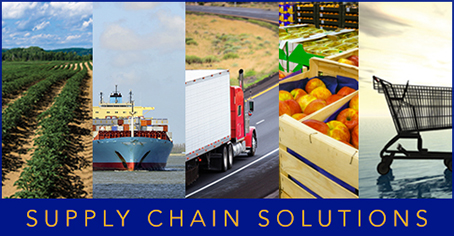Monitoring Success
Performance measurement is the only way to determine if savings initiatives are successful. It is essential to monitor the results before and after the strategic modification to quantify the impact over time. However, performance analysis must go beyond financial outcomes. Produce companies cannot afford to have product safety and quality, delivery timeliness, and product availability performance levels slip when pursuing cost reduction. Thus, the service impacts of cost savings initiatives must be also monitored.
Supply chain costs should be measured at a macro and micro level to target savings efforts toward larger opportunities. Klein notes the value of capturing the big picture, through measurement of “costs per cooler to understand the effects and efficiencies of the entire supply chain—from field to production to cooler to transport to retail.” Upward trends in these ‘big picture’ numbers can signal a need to take corrective actions.
Treacy believes breaking down total costs and landed costs is a valuable advanced capability. “People are getting more sophisticated and there are more tools available to support analysis,” he explains. “Cost is not just one number, it’s not just 8 percent of sales. People are realizing that if they start looking at cost down to the component level, then they can understand what is driving total cost and make better decisions.”
One of the major cost components is transportation and it is projected to in-crease, particularly during peak season. Hayes notes that there are fewer carriers willing to haul fresh produce, electronic logbooks drive greater compliance with hours of service regulations, and many freight movement hours are burned up while drivers wait for freight. As the freight pool shrinks, measurement becomes more important to understanding and managing costs.
Klein suggests using a transportation management system to capture data on cost per mile, route, carrier, and region. Then, use this knowledge to pursue annual or seasonal rates from carriers rather than being reliant on the spot market.
Understanding costs is particularly important when working with retailer requests for year-round contracts. In-complete cost knowledge can lead to poorly conceived bids.
“From week to week, month to month, and year to year, you really have to know your costs so you can play the evolving contracting game,” Hayes advises. “If you miscalculate, then all of a sudden, you put everyone’s income in jeopardy.”
Concluding Thoughts
In terms of cost management in the fresh produce industry, the quick wins and easy hits have been fully exploited. Companies must now navigate more complex supply chains and deal with external forces that drive costs higher. The only option is to adopt strategies with the potential to drive efficiencies across the chain and reduce waste—this means making robust commitments to collaboration, visibility, technology, and segmentation.
At the same time, produce companies must balance cost with service, monitor performance, and adapt to new conditions. This is the environment in which cost savings must be pursued, according to Treacy, who concludes, “It’s a juggling act. It’s a challenge. That’s part of what makes this industry fun because it changes every day and there’s always opportunity to improve.”



